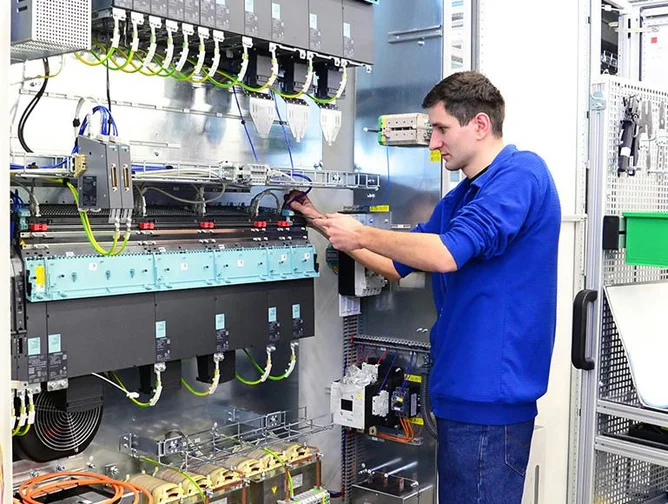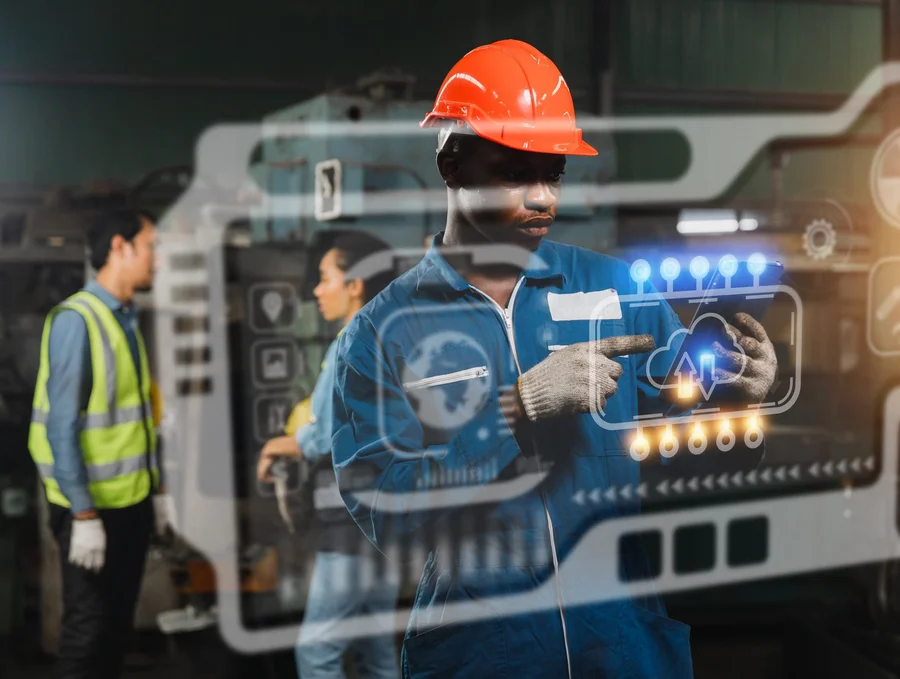After sharing his insights on Boston Dynamics robot Spot, Tom Cash, Director at Foxmere expands on the challenging prospects of the industrial metaverse.
At Manufacturing Digital, we’ve written extensively on the industrial metaverse.
In our dedicated magazine feature on Siemens, we explore how the technology leader is building its industrial metaverse for the future and revolutionising the concept of the factory as we know it.
Tom Cash, Director of Foxmere, the industrial parts supplier that partners with manufacturing giants like Siemens, Fanuc, Schneider Electric and ABB
argues that the metaverse as a concept isn’t actually as new as it appears.
Below he shares his thoughts on the computational, interoporability and regulatory challenges of the industrial metaverse, while expanding on its incredible possibilities for the future of manufacturing.
What sets Siemens’s approach to the industrial metaverse apart?
Haven’t we been talking about, and even using, digital twins, extended and augmented reality, blockchain and virtual commissioning for more than a decade?
Maybe so, but what sets Siemens’ initiatives apart are the ambitious goals it aims to achieve within the industrial digital realm.
The company wants to leverage AI to pioneer high-tech, flexible and sustainable manufacturing technologies, which go beyond mere duplication of physical systems in the virtual world.
Instead, it involves creating a dynamic, intelligent ecosystem that can revolutionise manufacturing processes.
Whether this investment will come to pass remains uncertain, as is the case with many plans.
However, one thing for sure is that the companies actively engaged in developing metaverse hardware, software and infrastructure are well aware of the difficulties when transforming traditional industries.
Can you expand on the concept of the metaverse?
The metaverse concept has been used in recent years primarily to describe the development of a 3D internet, referring to virtual environments used mostly — so far — for entertainment.
It now aims to create precise simulations of industrial equipment, where it’s used as an umbrella term for various existing technologies that can be combined to digitally replicate real world objects and processes.
For example, accurate simulations of factory equipment would allow manufacturing and other industrial firms to optimise operations without disruption, while improving collaboration amongst workers and frontline employee training.
As with the consumer vision of a 3D internet, the industrial metaverse concept is a work in progress with extraordinary potential.
How many manufacturers are actively exploring it?

According to a new report released by the Manufacturing Leadership Council, the NAM’s digital transformation division, and Deloitte, 92% of manufacturing executives say they are experimenting with or implementing at least one metaverse-related use case.
However, there are concerns about integrating existing technologies and systems when developing the industrial metaverse. Here, data preparation and transformation within complex workflows often present as major hurdles.
This comes as no surprise. Companies are already grappling with integrating systems across multiple plants, let alone the advent of industrial metaverse initiatives, which is heightening the demand and complexity of integrating both similar and disparate technologies.
Simply put, for the metaverse to become the next iteration of the internet, it must be interoperable. That is to say, the virtual worlds that constitute the metaverse must be able to freely exchange data, enabling seamless connections between people, processes, data and systems.
Picture a high-tech factory using digital twins for not only replicating equipment but for predictive maintenance purposes too.
AI could analyse data from the sensors on physical machinery and virtual counterparts, and when AI detects a potential issue, it would automatically schedule maintenance. Sounds pretty cool, doesn’t it?
How can manufacturers ensure interoperability in the industrial metaverse?
Ensuring interoperability in the metaverse does have its challenges. It requires widespread agreement on standards, unlike the collaborative origins of the internet with foundational standards like HTML and TCP/IP.
Metaverse building blocks operate differently, using various rendering engines and file formats that make post-facto standardisation complex.
Therefore, the rapidly evolving metaverse space requires regulatory standards to ensure safety, fairness and interoperability.
In Europe, the Digital Services Act (DSA) and Digital Markets Act (DMA) have recently been implemented to promote fair competition and prevent anticompetitive practices among digital platforms.
This can indirectly benefit the industrial metaverse by encouraging interoperability and data sharing between different platforms and services.
As the industrial metaverse requires, this would make it easier for systems and processes to connect and exchange data seamlessly.
Regulatory standards are typically established through government agencies, industry associations and international bodies. However, market competition can put pressure on getting standards to pass.
When doing so, it is essential to encourage collaboration among the various stakeholders in the metaverse community.
This collaboration would ideally lead to the development of standards that benefit the entire community rather than favouring specific players.
A way that supports industry collaboration is open source. This is a software model where the source code of a program is made available to the public, which would allow companies to contribute towards developing interoperable options, ensuring the metaverse’s infrastructure is accessible and adaptable.
For instance, developers could build upon existing functionality, introduce new features and integrate emerging technologies.
These could, for example, include AI, blockchain and spatial computing. With that in mind, the possibilities are truly endless.
How can manufacturing take the metaverse from concept to reality?
The metaverse is not a reality yet, and we’ve been talking about these technologies since the term metaverse was coined in 1992, by author Neal Stephenson.
While we can get excited by the whole thing, especially in the industrial realm, manufacturers must look after and upgrade their current processes in the meantime. To start this process, establishing a trusted industrial equipment supplier is a crucial first step.
Be it for the monitoring of current equipment or wanting to build accurate digital twins, receiving parts like Programmable Logic Controllers (PLCs) can help manufacturers save on costs, increase efficiency and reduce downtime.
By sourcing parts, such as Foxmere’s PLCs, manufacturers can lay the foundations for the metaverse future.
And by doing so, they will initiate the process of gathering and effectively managing data from their equipment, serving as a means to bridging the physical and digital realms of the industrial landscape.



